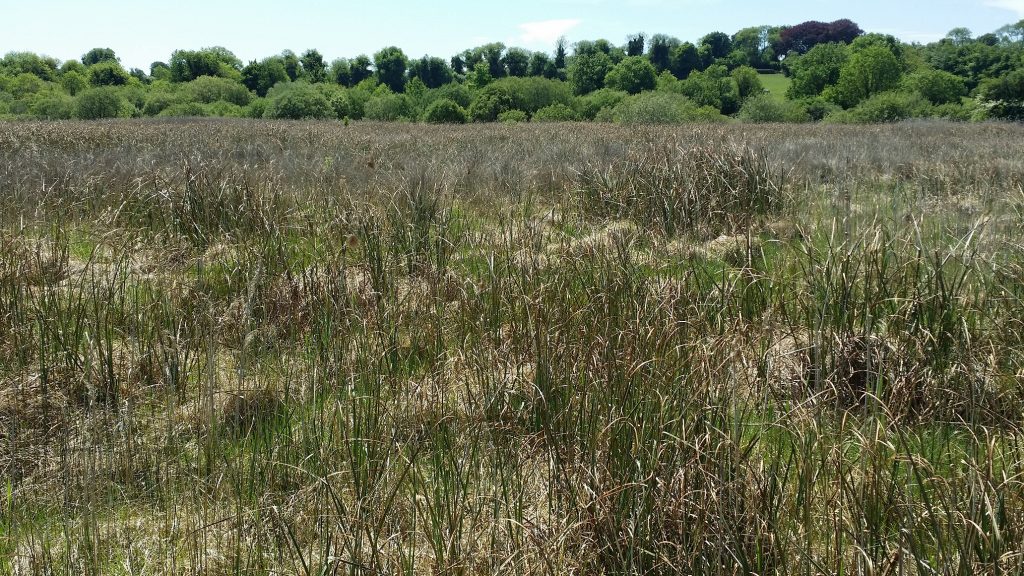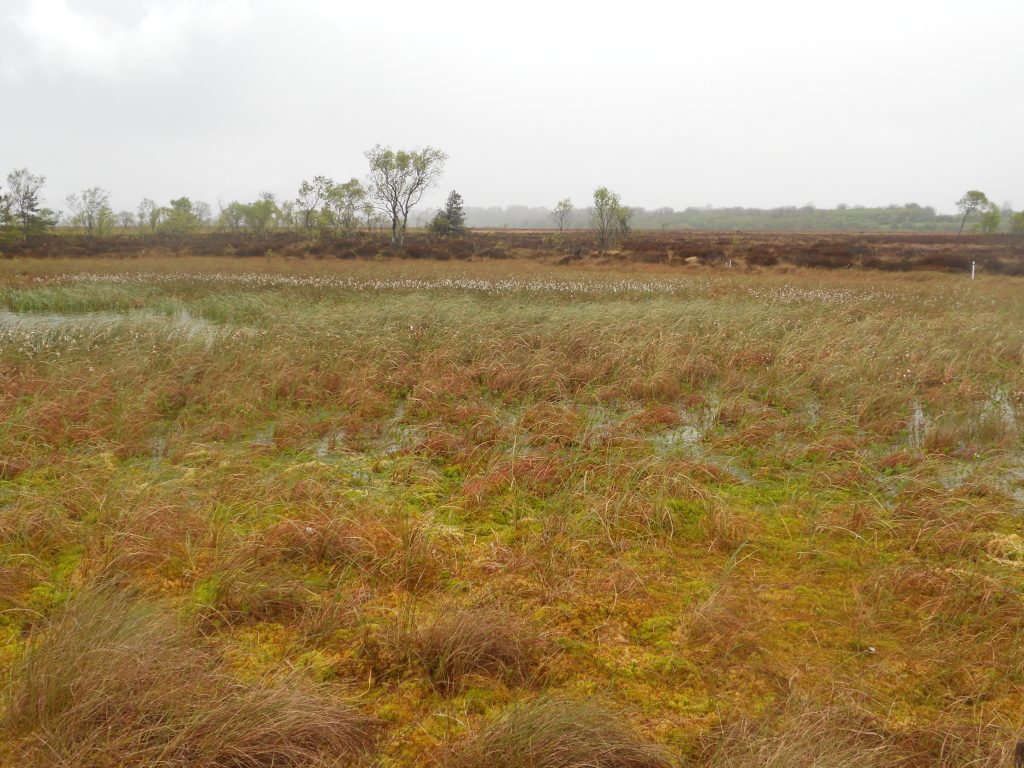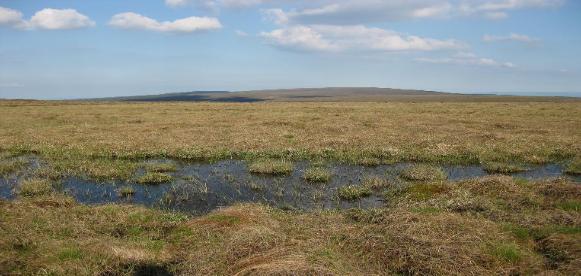There are three main categories of peatlands in Ireland: Fens, Raised Bogs and Blanket Bogs.
Fens
At the end of the last Ice Age about 10,000 years ago, peat formation began in Ireland. As the ice sheet began to melt it left behind gravel ridges. Where the melt-water was trapped, shallow lakes were formed.
Plants such as reeds grew along the edges of the lakes. As these plants died, they decomposed at a slow rate due to the wet environment. This was mainly due to the lack of the oxygen which prevented microbial breakdown. The remains of the plants built up on the lake bed as a layer of peat. This peat that forms below the water level is called fen peat. Over time the peat layer became thicker and the area of open water was much reduced. The water that is fed into a fen is groundwater and is rich in minerals. Some fens have progressed into raised bogs. This progression takes place over hundreds of years as the peat and water turn from alkaline to acidic conditions. The change in these abiotic factors attracts a different plant and animal community. Where the conditions are predominantly that of an alkaline habitat it is a fen; where the conditions are predominantly that of an acidic habitat it is a raised bog.

Raised Bogs
Once plants began to decompose at the edge of a lake and once conditions were right for peat fen to form, the lakes slowly started to reduce in size. The fen continued to grow and over time a raised bog habitat began to form. The only water that is supplied to a raised bog is rainwater which is very low in nutrients.
Spahgnum moss which is adapted to grow in low nutrient and acidic conditions becomes the dominant plant. This plant is the ‘bog builder’. It makes the bog more acidic through a complex ion-exchange mechanism and forms a characteristic pattern of hummocks and hollows on the living bog surface. Peat is a soil-like substance that is made up of partially rotted remains of dead plants which have accumulated on top of each other in waterlogged places for thousands of years. It consists of Sphagnum moss along with roots, leaves, flowers and seeds of heathers, grasses and sedges.
Clara Bog began to form about 8000 – 10,000 years ago when the lake was filled with a layer of dead vegetation forming fen peat. This coincides with the time that raised bogs began to form in Ireland. Raised bogs have an average peat depth of 9 to 12 metres. Clara Bog is now 10 metres deep. A 30 centimetre layer of active living Spahgnum moss on top of the dead peat relies on nutrient-poor rainwater. Approximately 850 millimetres of rain falls every year.

Blanket Bogs
Outside the Midlands, most peatlands in Ireland, especially in the West are described as blanket bog. They form in areas where the average annual rainfall is greater than 1,200mm and where rain falls on at least 235 days each year. Blanket Bogs began to form about 4,000 – 7,000 years ago; they are much younger than raised bogs.
Because of tree clearance in these areas, along with the high rainfall, minerals such as iron, were washed down to the lower layers of soil. The minerals accumulated to form an impermeable layer called an iron pan. This then caused waterlogged conditions that favoured peat formation.
The average peat depth is 1.2 – 3 metres. There are two main types of Blanket bog. Lowland blanket bog is formed below the 152 metre contour line. Mountain blanket bog forms in areas above the 152 metre contour line in the west of Ireland and in mountainous regions throughout the country, on slopes of up to 20 degrees.



